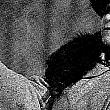
Passenger Pigeons
GRHC - April 25th, 2012
Michigan and Grand Rapids played an unfortunate role in the worst example of mass extermination by humans in the history of wildlife, the Passenger Pigeon.
Transcript
Slaughter of the Passenger Pigeon was, without doubt, the worst example of mass extermination by humans in the history of wildlife. The bird, gentle and timid, was the size of a small hawk. It once thrived in hordes so numerous that the skies were darkened at their passing.
Once railways linked the Great Lakes area with New York in the early 1850s, well-organized commercial trappers supplied east coast cities with these birds. On just one day in 1860 over 235,000 passenger pigeons were sent east from Grand Rapids alone. The number of dead birds sent by rail was estimated at 1,500,000 for the summer, as well as over 80,000 live birds; an equal number were sent by water.
Traffic in live birds was enormous. Nets spread over an area baited with a live bird would bring in from 700 to 800 birds at one spring of the trap; live birds commanded the highest price. They were mainly purchased to serve as live targets by the numerous trap-shooting clubs; many such events were held in the city during the 1860s and 70s. The “clay pigeon” is a relic of the time when live birds were used.
After the major nesting of 1878 passenger pigeons rapidly decreased until the close of the nineteenth century. The last flock sighted in Kent County, was a group of about sixty in 1890.
The sole surviving passenger pigeon died in 1914 at the Cincinnati zoo.
Full Details
| Title | Passenger Pigeons |
|---|---|
| Creator | GRHC |
| Keywords | WYCE; radio; Grand Rapids; Historical Commission; history; Passenger Pigeons; Great Lakes; |
| Duration | 2:12 |
| Pubdate String | April 25th, 2012 |

 facebook
facebook